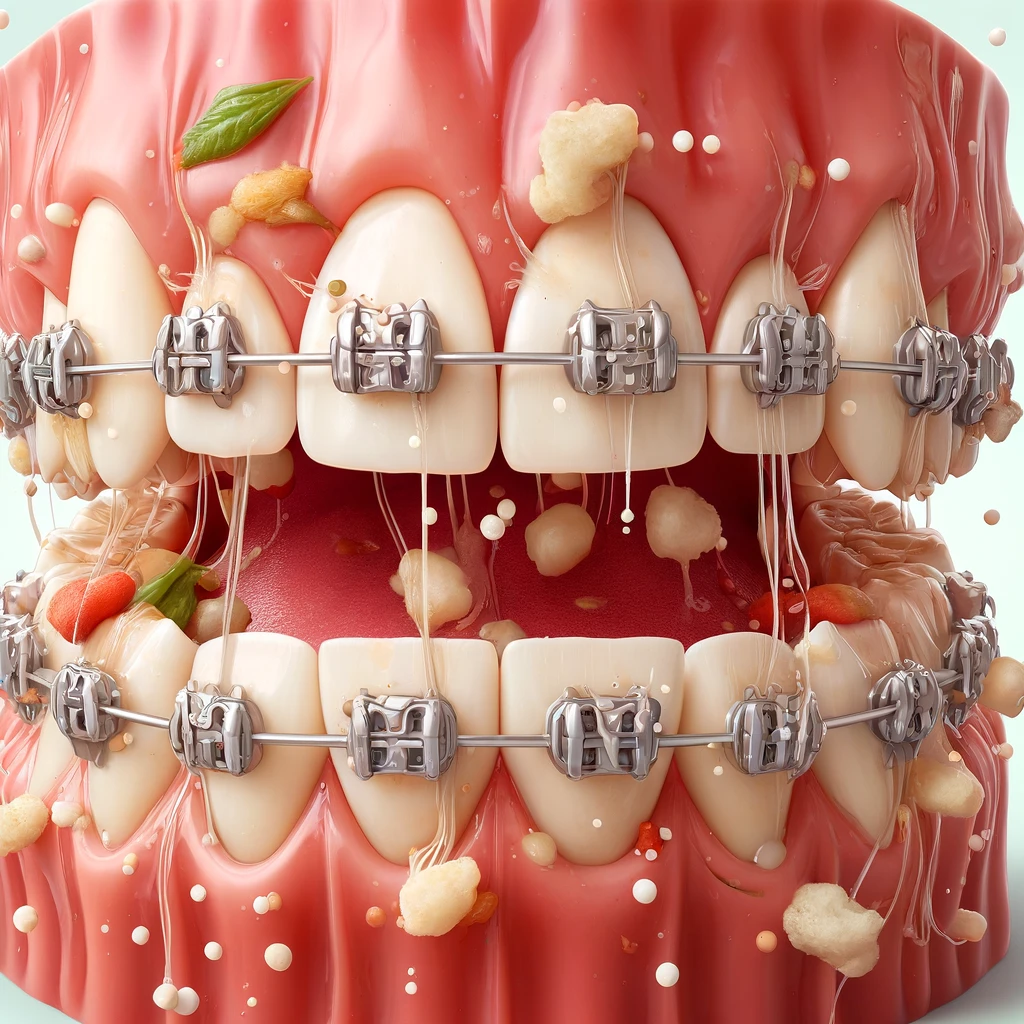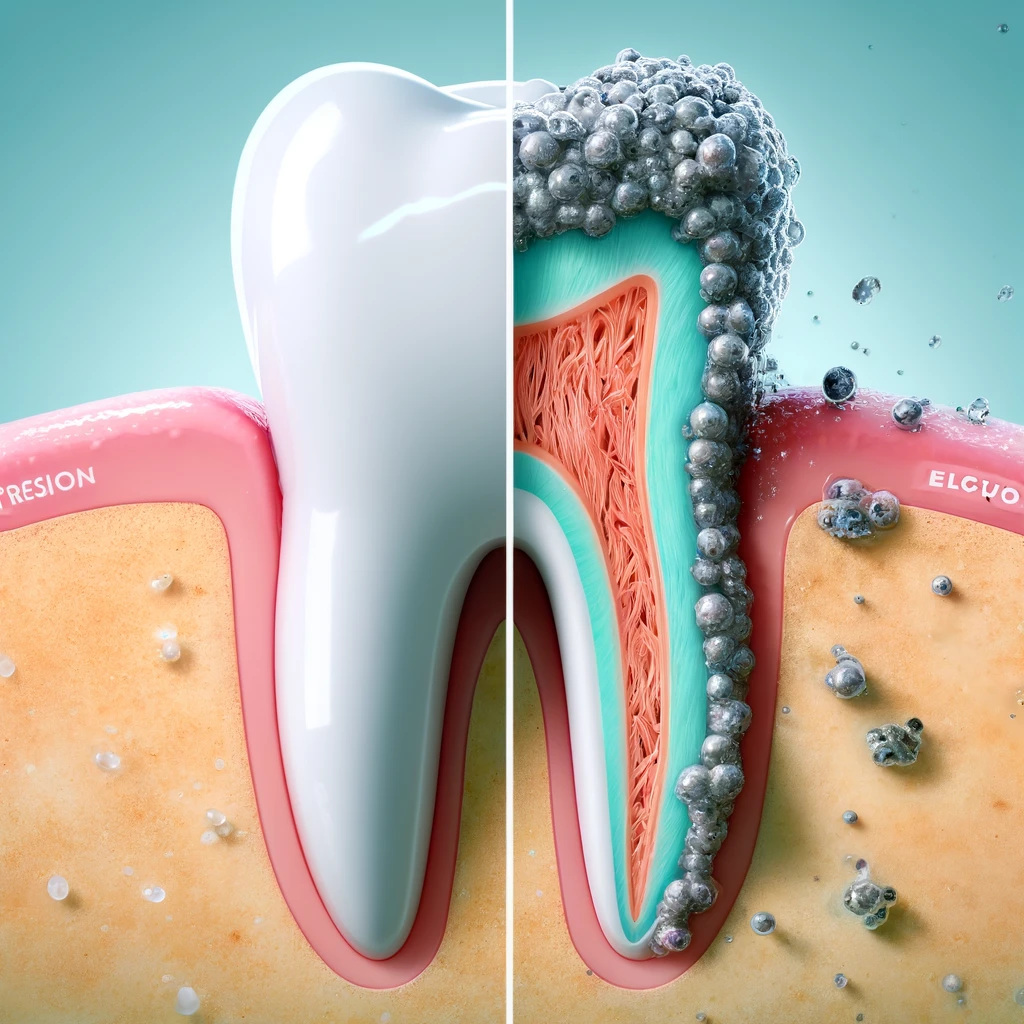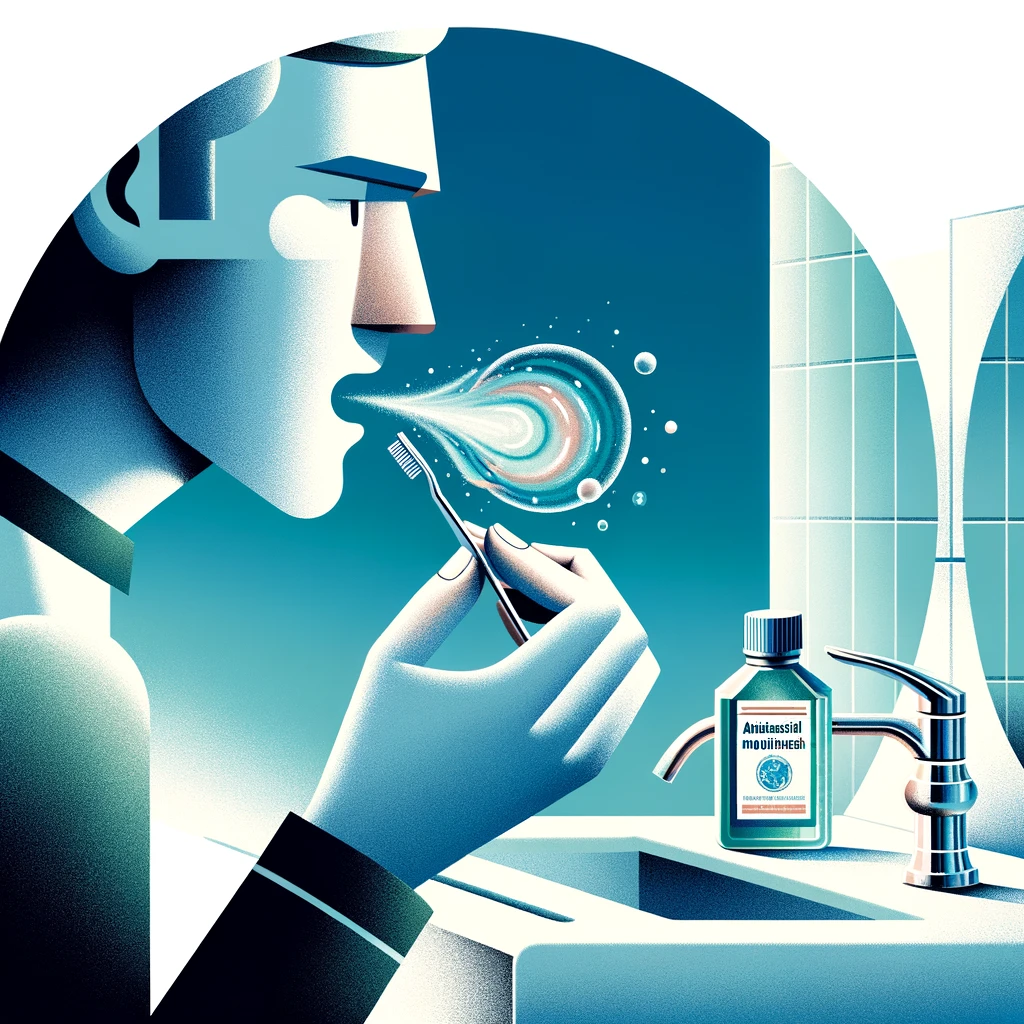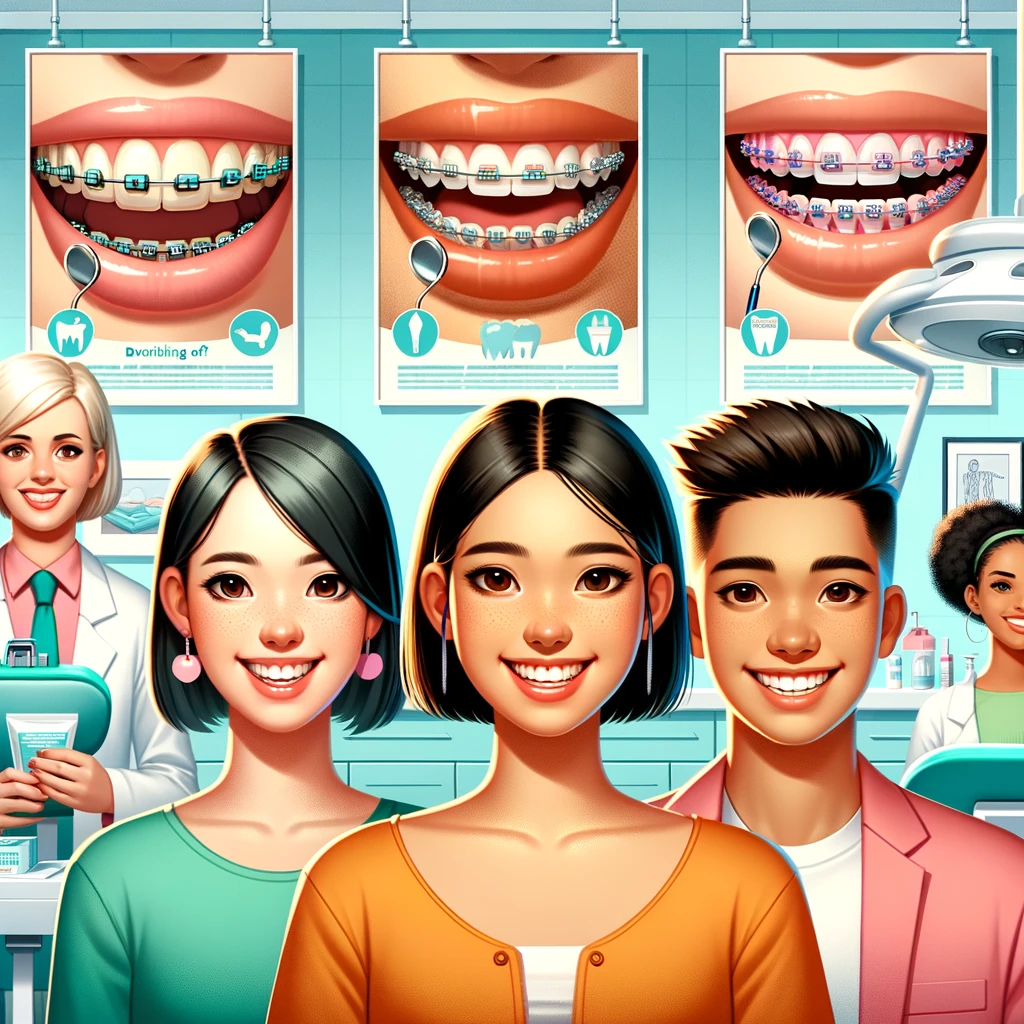What is the Best Toothpaste for Braces – 7 important information. When you wear braces, maintaining optimal oral hygiene becomes more crucial than ever. Braces, with their wires and brackets, create numerous nooks and crannies that can trap food particles and plaque, making it challenging to keep your teeth and gums clean. This can increase the risk of dental issues such as cavities, gum disease, and enamel staining, which can compromise the effectiveness and appearance of your orthodontic treatment.
Given these challenges, using the right toothpaste is not just a recommendation; it’s a necessity. Special toothpastes formulated for braces can help address these issues more effectively than regular toothpastes. They are designed to work around the brackets and wires, helping to prevent the buildup of plaque and protect against cavities without being overly abrasive, which could potentially damage the braces and the enamel.
Furthermore, maintaining rigorous oral hygiene with braces is vital not only for the health of your teeth and gums but also for the success of your orthodontic treatment. A good dental care routine, including the right toothpaste, ensures that when the braces come off, the teeth underneath are healthy, strong, and well-cared for. This introduction sets the stage for understanding why choosing the best toothpaste for braces is a key component of your dental care routine, ensuring that your smile is beautiful and healthy both during and after your orthodontic journey.
TIP: Bunions and running – 10 important information
Understanding Braces and Oral Health
Braces are orthodontic devices used to correct misaligned teeth and jaws, enhancing both oral function and aesthetic appearance. They consist of brackets that are attached to each tooth and connected by wires. These wires are periodically tightened by an orthodontist to gradually move the teeth into the desired position. The entire process can vary in duration depending on the individual’s needs but typically lasts from one to three years.
Impact on Oral Hygiene
The structure of braces—brackets, wires, and bands—creates additional surfaces in the mouth, which can complicate the task of keeping teeth clean. The intricate arrangement can trap food particles and dental plaque more easily than unbraced teeth. Proper brushing and flossing techniques become harder to perform effectively, which can lead to less than optimal cleaning.
Common Oral Health Challenges for Brace Wearers
- Food Particles Getting Stuck: Braces often trap food particles in hard-to-reach places. If these particles are not removed promptly, they can contribute to bacterial growth and plaque formation.
- Risk of Plaque Buildup: Plaque, a sticky film of food debris, bacteria, and saliva, can accumulate around the brackets and along the gumline more rapidly with braces. This buildup is not only unsightly but can also lead to dental caries (cavities) and gingival inflammation (gum disease).
- Increased Risk of Gum Disease: With the accumulation of plaque, the risk of developing gingivitis (early gum disease) and, eventually, periodontitis (advanced gum disease) increases. These conditions can cause soreness, bleeding, and swollen gums.
- Enamel Staining: If plaque is not thoroughly removed, it can lead to permanent discoloration of the tooth enamel around the brackets. This is especially concerning because it can result in uneven coloring once the braces are removed.
Understanding these challenges is the first step in addressing them effectively. The right toothpaste and diligent oral hygiene practices are critical to mitigating these risks and ensuring that the teeth remain healthy throughout the orthodontic treatment. This knowledge sets the stage for exploring how to select the best toothpaste for braces in the following sections.

Criteria for Choosing the Right Toothpaste
Selecting the appropriate toothpaste is crucial for individuals with braces, as it can significantly influence their oral health. Here are some critical criteria to consider when choosing the best toothpaste for braces:
Fluoride Content
Fluoride is a vital ingredient in toothpaste designed to prevent cavities and strengthen tooth enamel. For those wearing braces, fluoride’s role is even more significant due to the increased risk of plaque accumulation around the brackets and under the wires, which can lead to demineralization of the enamel. Using fluoride toothpaste helps to remineralize these vulnerable areas, effectively preventing the formation of cavities and decay under and around the braces.
Abrasiveness
While it’s important to remove plaque and food debris, it’s equally crucial to choose a toothpaste that isn’t too abrasive. Highly abrasive toothpastes can damage both the orthodontic brackets and the enamel. Toothpastes are rated by their Relative Dentin Abrasivity (RDA) value, and those with a low RDA are recommended for brace wearers to minimize wear and tear on both the appliances and the teeth.
Antimicrobial Properties
Toothpaste with antimicrobial properties plays a key role in controlling bacterial growth in the mouth, which is vital for preventing plaque buildup and gingivitis, especially when braces are involved. Ingredients like triclosan or essential oils can reduce the overall bacterial load, helping to maintain a healthier oral environment and reduce the risk of infections and bad breath associated with braces.
Sensitivity
Many individuals experience increased tooth and gum sensitivity as a result of wearing braces. This sensitivity can be due to the movement of teeth or irritation from the brackets. Toothpastes formulated for sensitive teeth contain ingredients such as potassium nitrate or stannous fluoride, which help to reduce nerve sensitivity and provide relief. These specialized toothpastes can be particularly beneficial for brace wearers who struggle with discomfort related to sensitivity.
By understanding and considering these criteria—fluoride content, abrasiveness, antimicrobial properties, and options for sensitivity—individuals can make informed choices about the best toothpaste to use during their orthodontic treatment. This ensures not only the effectiveness of their oral hygiene regimen but also the comfort and health of their teeth and gums throughout the duration of wearing braces.
See also: Reishi chocholate – 7 great health benefits
Recommended Toothpaste Types for Braces
Selecting the right type of toothpaste is crucial for those with braces to ensure effective cleaning while avoiding damage to both the orthodontic appliances and the teeth. Here’s a breakdown of different types of toothpaste that are beneficial for braces, along with specific product recommendations and their pros and cons.
Fluoride Toothpaste
Description: Fluoride toothpastes are essential for those with braces as they help strengthen tooth enamel and prevent decay. They work by replacing minerals lost during the demineralization process, which is common around the brackets.
Product Recommendations:
- Colgate Total
- Pros: Offers comprehensive antimicrobial protection, helps reduce plaque buildup and gingivitis.
- Cons: Some formulations might feel more abrasive, which isn’t ideal for sensitive gums.
- Crest Cavity Protection
- Pros: Effective in fighting cavities and keeping the enamel strong.
- Cons: Basic formula without additional features for sensitivity or gingivitis.
Tartar Control Toothpaste
Description: Tartar control toothpastes are designed to prevent tartar build-up, which braces wearers are particularly prone to. These toothpastes typically contain chemical compounds that break down plaque before it hardens into tartar.
Product Recommendations:
- Crest Pro-Health Advanced
- Pros: Reduces plaque and tartar formation; contains fluoride for anti-cavity benefits.
- Cons: May cause slight tooth sensitivity in some users.
- Sensodyne Pronamel
- Pros: Gentle on enamel and designed to protect against acid erosion, which is beneficial for braces.
- Cons: Higher price point compared to regular toothpastes.
Desensitizing Toothpaste
Description: Desensitizing toothpastes are formulated to help reduce tooth sensitivity, a common issue for brace wearers. They typically contain potassium nitrate or stannous fluoride to block pain signals from the tooth surface to the nerve.
Product Recommendations:
- Sensodyne Rapid Relief
- Pros: Quick action to alleviate sensitivity, can be used daily.
- Cons: Does not focus on tartar or advanced plaque control.
- Colgate Sensitive Pro-Relief
- Pros: Provides instant relief and builds a long-lasting protective barrier.
- Cons: Might not be as effective in plaque control as other specialized toothpastes.
Tips for Choosing
- Check for ADA Approval: Always choose products that are approved by the American Dental Association (ADA), as they meet strict guidelines for safety and effectiveness.
- Consult with Your Orthodontist: Before switching to a new toothpaste, especially when you have braces, it’s a good idea to consult with your orthodontist to ensure it’s suitable for your specific orthodontic needs.
These recommendations provide a starting point for those looking to find the best toothpaste while undergoing orthodontic treatment. Each type offers unique benefits, so choosing the right one will depend on your specific oral health concerns and preferences.

What to Avoid
When selecting toothpaste for braces, it’s not only important to know what to look for but also what to avoid. Certain ingredients and types of toothpaste can be detrimental to braces or simply less effective in maintaining dental hygiene during orthodontic treatment. Here’s a guide to what you should steer clear of and some tips on how to read toothpaste labels effectively.
Ingredients and Types of Toothpaste to Avoid
- Whitening Toothpastes:
- Issue: Whitening toothpastes often contain higher levels of abrasive ingredients designed to remove stains from the tooth surface. These abrasives can damage the brackets and wires of braces and potentially wear down the enamel.
- Advice: Avoid any toothpaste labeled as “whitening” while you have braces.
- Baking Soda Toothpastes:
- Issue: Baking soda (sodium bicarbonate) is a mild abrasive. While it’s effective at removing surface stains, it can be too harsh for use with braces, risking damage to the orthodontic appliances and enamel erosion.
- Advice: Look for non-abrasive formulations specifically designed for braces.
- Highly Abrasive Toothpastes:
- Issue: Some toothpastes are designed to be extra abrasive to tackle tough dental stains. These can increase the risk of scratching the surfaces of both your braces and teeth.
- Advice: Check the Relative Dentin Abrasivity (RDA) level (if available); choose toothpaste with a low RDA value.
- Toothpastes with Large Particles:
- Issue: Some toothpastes contain large particles for scrubbing or additional cleaning power, which can get stuck under braces and irritate gums.
- Advice: Opt for gel-based toothpastes or those with a smooth texture.
Tips on Reading Labels and Understanding Toothpaste Marketing
- Check for Active Ingredients: Identify active ingredients like fluoride (for cavity protection) and potassium nitrate or stannous fluoride (for sensitivity). Avoid those that list harsh abrasives or unnecessary chemicals.
- ADA Seal of Approval: Look for the American Dental Association (ADA) Seal of Approval. This seal indicates that the toothpaste is both safe and effective for the purposes it advertises.
- Marketing Claims: Be wary of marketing claims that sound too good to be true, such as “miracle whitening” or “instant results.” Stick to products that focus on dental health rather than cosmetic results.
- Consult Your Orthodontist: Your orthodontist can provide recommendations based on the most up-to-date research and products specifically suited for those with braces.
Understanding these guidelines will help you choose the right toothpaste that is safe and effective for your orthodontic care. Avoiding the wrong types can protect your braces and ensure that your teeth remain healthy throughout the treatment process.
See also: Shrimp and Acid Reflux – 10 important information
Additional Oral Hygiene Tips for Brace Wearers
Maintaining excellent oral hygiene is crucial for anyone, but it becomes even more critical for those wearing braces. Here are comprehensive tips and recommendations on daily dental care routines, the significance of regular dental check-ups, and supportive products and tools that can enhance oral hygiene for brace wearers.
Daily Dental Care Routine Recommendations
- Brushing Techniques:
- Frequency: Brush at least three times a day—after each meal and before bed. This helps remove food particles and plaque that have accumulated around the braces.
- Tools: Use a soft-bristled toothbrush or an electric toothbrush specifically designed for orthodontic care.
- Method: Hold the brush at a 45-degree angle to the gums and brush gently in small circular motions. Ensure you brush above and below the brackets to target all surfaces of the teeth and braces.
- Flossing Techniques:
- Frequency: Floss at least once a day to remove plaque and food particles that a toothbrush can’t reach.
- Tools: Use waxed floss, a floss threader, or orthodontic flossers designed to navigate around wires and brackets easily.
- Method: Thread the floss under the main wire before passing it between two teeth. Slide the floss up and down against the tooth surface and under the gumline. Be gentle to avoid damaging the wires and brackets.
The Importance of Regular Dental Check-Ups
- Routine Visits: Schedule regular visits to your dentist and orthodontist every 4-6 months, or as recommended. These check-ups are vital for professional cleanings and to ensure your braces are functioning correctly.
- Preventative Care: Regular check-ups help prevent oral health issues that could complicate or extend your orthodontic treatment. They also provide an opportunity to adjust dental care routines as needed.
Products and Tools That Complement the Use of the Right Toothpaste
- Water Flossers:
- Use: A water flosser is an excellent tool for cleaning around braces. It uses a stream of pulsating water to remove food particles and plaque between teeth and along the gumline.
- Benefits: It’s particularly effective for those who find traditional flossing challenging with braces.
- Interdental Brushes:
- Use: These small brushes are perfect for cleaning between the wires and around the brackets of braces.
- Benefits: They help remove trapped food particles and plaque that a regular toothbrush might miss, especially around the braces’ components.
- Antibacterial Mouthwash:
- Use: Rinse with an antibacterial mouthwash at least once a day.
- Benefits: Mouthwash can reach areas that brushing and flossing might miss, reducing the overall bacterial load and helping to prevent gingivitis and bad breath.
By integrating these daily dental care techniques, attending regular check-ups, and using supportive cleaning tools, individuals with braces can maintain optimal oral health throughout their orthodontic journey. This proactive approach helps ensure that once the braces come off, the smile revealed is as healthy as it is beautiful.
See also: Can i get botox after microblading – 7 important information
What is the Best Toothpaste for Braces – Conclusion
Throughout this article, we have explored several crucial aspects of selecting and using the right toothpaste for braces, along with comprehensive oral hygiene tips specifically tailored for individuals undergoing orthodontic treatment. Here’s a brief recap of the key points discussed:
- Choosing the Right Toothpaste:
- Importance of fluoride to prevent cavities and remineralize enamel around braces.
- Low abrasiveness to protect braces and tooth enamel from damage.
- Antimicrobial properties to reduce plaque and bacteria buildup.
- Options for reducing sensitivity, providing comfort alongside oral health protection.
- What to Avoid:
- Steer clear of whitening toothpastes and those with baking soda, as they can be too abrasive.
- Avoid products with large scrubbing particles that can get trapped in braces.
- Enhancing Oral Hygiene Practices:
- Adopt meticulous brushing and flossing techniques using tools like soft-bristled or electric toothbrushes and floss threaders.
- Regular use of adjunctive hygiene tools such as water flossers and interdental brushes to maintain thorough cleanliness.
- The Importance of Regular Professional Care:
- Regular check-ups with your orthodontist and dentist are essential for monitoring the health of your teeth and the progress of your orthodontic treatment.
- Expert Opinions:
- Insights from dental professionals emphasize the importance of comprehensive oral hygiene and proactive dental care to ensure the success of your orthodontic treatment.
As you continue or begin your journey with braces, it is crucial to consult regularly with your dental care provider. Every individual’s dental situation is unique, and your dentist or orthodontist will provide personalized advice tailored to your specific needs and circumstances. They are your best resource for recommendations on products and practices that can help you maintain optimal oral health. By staying committed to diligent oral hygiene and following professional advice, you can look forward to a successful orthodontic outcome and a healthy, beautiful smile.

Call to Action: Stay Proactive in Your Dental Health Journey
Embarking on the journey with braces is a significant step towards achieving not just a more attractive smile, but also a healthier one. Your commitment to this process is essential. Remember, the effectiveness of your treatment depends not only on the expertise of your orthodontic specialists but also on your dedication to maintaining excellent oral hygiene. Here’s how you can stay proactive and informed:
- Stay Engaged with Your Dental Care:
- Regularly consult with your orthodontist and follow their advice diligently. They are equipped to handle any concerns you might have about your braces and overall oral health.
- Educate Yourself Continuously:
- Oral health care is an ever-evolving field with new technologies and methodologies enhancing care processes continually. Keep yourself updated by seeking information and asking questions during your dental visits.
- Subscribe for Updates:
- To ensure you never miss out on valuable tips and the latest in dental health care, consider subscribing to our newsletter. You’ll receive updates right in your inbox, including expert advice, new product reviews, and personal care tips specifically tailored for those with braces.
- Follow Us on Social Media:
- Join our community on social media platforms where we share daily tips, motivational posts, and informative content that can help you navigate your orthodontic care journey. It’s also a great place to connect with others who are experiencing similar journeys.
- Stay Motivated:
- Keep a positive mindset and visualize the beautiful smile that awaits you. Your efforts now will pay off immensely when your braces come off, revealing not only straighter teeth but also a robust dental foundation.
By staying proactive in your dental health journey, you ensure that your orthodontic treatment is as effective as possible. Subscribe and follow us for more dental health tips and guidance, and take control of your path to a healthier, more confident smile.


